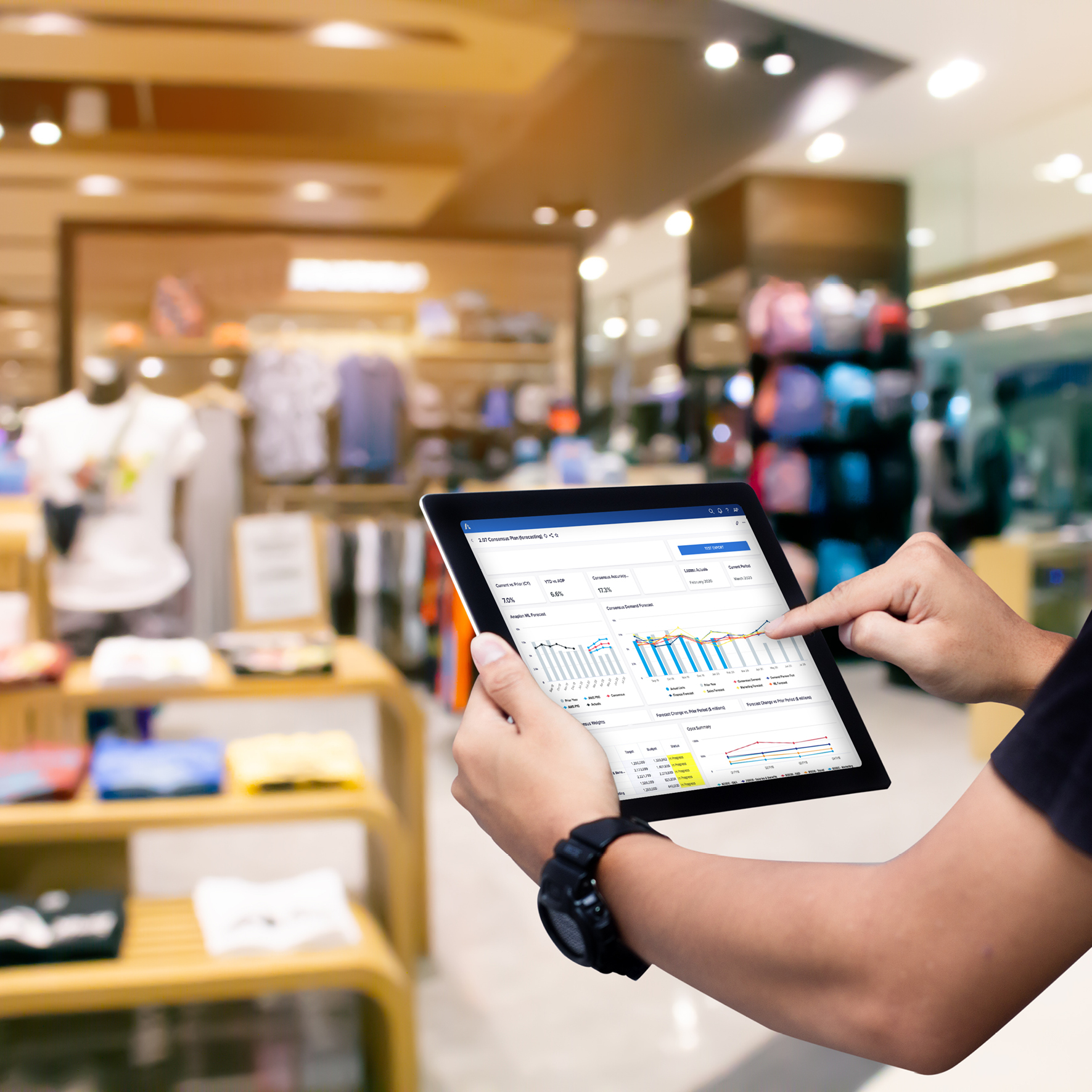According to the Bureau of Labor Statistics, productivity across retail has not increased in nearly 30 years. In our digital marketplace, more data than ever is being acquired through multiple platforms emerging to keep up with unpredictable consumer behavior. This data-driven environment is only getting more complex by the minute.
For field and corporate teams in retail, data has evolved from being the go-to source of insight to a digital nightmare that’s bogging down the industry. On any given day, managers are expected to compile and analyze nearly 100 reports to find top priorities for their stores that have a multitude of needs. This is on top of performing daily tasks to keep stores afloat while remaining customer focused. Corporate planning and forecasting are complex processes that require a centralized data source for a streamlined, holistic understanding of the business.
On any given day, managers are expected to compile and analyze nearly 100 reports to find top priorities for their stores that have a multitude of needs. This is on top of performing daily tasks to keep stores afloat while remaining customer focused.
Retailers need tools that increase productivity by eliminating scattered data, improving collaborations across departments, and automating complex decision making. But first, let’s take a deeper look into what’s broken.
What’s Really Up with Productivity in Retail?
Data management in retail is outdated. Some businesses in retail are crippled by continuing to use complex spreadsheets to organize and manage data. This system worked 30 years ago when the exchange of information could take days or even weeks. Now data is monitored in real time and there’s no way even the most sophisticated spreadsheets can keep up.
Another concern is the disconnect between departments within mid-size to conglomerate retail businesses. Finance uses its own set of data to make decisions in planning that can affect multiple departments at once. When things change, as they often do in the planning process, it’s critical that every affected department should have live access to this information so they can pivot.
Lastly, many retailers aren’t using aggregated data to peak potential. Field leaders in retail are not properly trained in translating available data into actionable priorities. Inventory piles up in back rooms due to inefficient tracking. Continuity is affected when store employee turnover increases when managers are disengaged. As problem after problem arises, stores lose their appeal and are soon eligible for the chopping block—the inevitable closure.
Connecting Data, People, & Planning
According to Pierre Chambe, consolidation and reporting director for Sephora, the French beauty retailer’s internal planning process used to be disconnected. They were using Excel spreadsheets that ultimately were integrated into legacy spreadsheets. Visibility in planning across the company was low and it made forecasting increasingly difficult. Sephora’s finance department decided to centralize their data by using connected planning provided by Anaplan.
Anaplan, a cloud-based connected planning software, was designed to help businesses make better decisions, manage risk and uncertainty, and improve overall productivity. The goal is to provide a unified view of an organization’s data and make it easily accessible to decision-makers at all levels of the organization. Sephora’s finance department was able to use the tool to consolidate their spreadsheet data in the platform during their biggest challenge, planning for new store openings across the U.S.
“We used all the Excel spreadsheets spread across the organization to model into the Anaplan platform to have more visibility and to be able to simulate, play with assumptions, and be able to speed up our forecasting process,” explains Chambe. Anaplan provided a single source of analysis for all data, enabling Sephora to make better decisions and respond quickly to changing conditions. It also eliminated tedious, manual processes that created a more efficient and collaborative planning process.
Artificial Intelligence for Decision Making
Field leaders juggle multiple tasks in a variety of areas. Inventory management, team management, marketing—it’s amazing how they manage to keep their heads on straight. But that’s the problem, they shouldn’t have to do it alone.
With nearly 1,000 stores opening yearly, Dollar General is one the fastest growing retailers in the U.S. But with scale comes obstacles that seem to affect district managers who oversee 20 stores on average. Dollar General’s SVP of Corporate Store Operations, Zak Brining, was looking to bring consistency in productivity across the district level of over 19,000 stores without dumping another complicated report onto their district managers’ plates. Quorso filled that gap.
Quorso is an AI-powered platform that provides real-time recommendations to store managers on how to optimize their store operations and improve customer experience. Quorso also uses machine learning to analyze customer data and predict future sales trends, helping retail leadership make more informed decisions about product placement and promotions.
“Investing in District Managers and other Field Leaders is critical to Dollar General’s success. Quorso is unique in the marketplace. It combines best-in-class analytics to identify personal priorities for each manager, with an intuitive workflow that guides them to take the right actions in seconds,” says Brining. Simplifying the day-to-day responsibilities of retail field leaders has not only increased productivity but overall sales as well.
Digital Tools
Technology is not a silver bullet, but it helps retailers leapfrog over antiquated systems and processes. To remain competitive in a rapidly changing environment, retailers have to prioritize the data they have available. Critical thinking, a human analytical tool, is key to determining the “why” of the data being collected. Asking high-gain questions that reveal the problems and solutions is the first step to finding a collaborative tech partner to make sense of data and analytics. Looking forward, boosting productivity comes down to one major truth: Excel spreadsheets are out while connected planning and AI-backed decision making are in.




